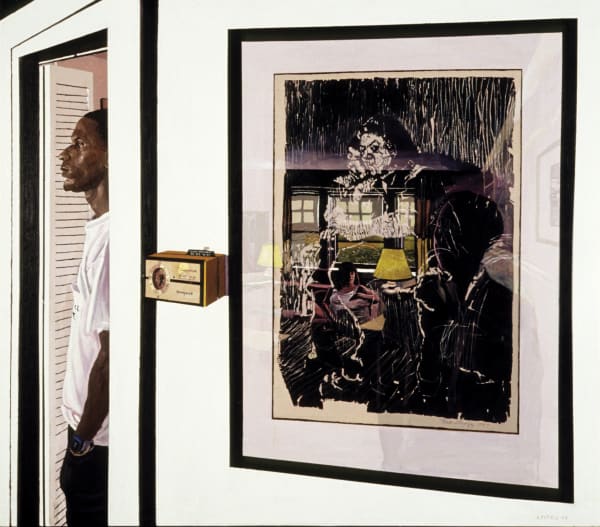Born in Brooklyn in 1935, Mel Leipzig studied painting at Cooper Union and Yale, where his interest in realist portraiture was discouraged by such eminences as Josef Albers. But he stuck to his vision, and since 1970 he’s been chronicling the lives and contexts of friends and neighbors in Trenton, N.J. — where he taught for 45 years — with precision, empathy and a volume of detail that would overwhelm a photograph.
That’s not to say that he’s literal-minded. Leipzig frequently distorts perspective to fit things in, or to emphasize the centrality of his subjects in their environments. He doesn’t shrink from moving a couch, adding a window or even changing the color of the sky if it serves a painting’s overall composition. He also glances against as much painterly self-awareness as any younger artist. “Gregory at Gallery Henoch” catches an employee of Leipzig’s own gallery posing in front of another one of his portraits, and in “The Woodcut” (1994), Leipzig paints himself and his daughter Francesca reflected in the glass over his own 1957 woodcut of his mother and sister.
But what he’s consistently infatuated with is the endless quantity of visual material presented by the real world. (“That’s the thing about realism,” he likes to say. “Everything is paintable!”) A portrait of Louis Draper, with whom Leipzig shared an office at Mercer County Community College, surrounds the photographer with books, papers and acoustic ceiling tiles, all rendered with as much attention as the man himself.
--WILL HEINRICH, New York Times


